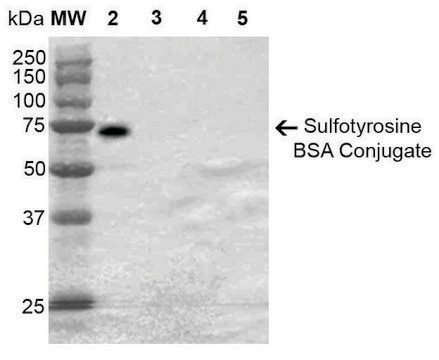F3261
[Glu1]-Fibrinopeptid B
≥90% (HPLC)
Synonym(e):
Fibrinopeptide B
About This Item
Empfohlene Produkte
Biologische Quelle
human
Qualitätsniveau
Assay
≥90% (HPLC)
Form
powder
Methode(n)
LC/MS: suitable
electrophoresis: suitable
UniProt-Hinterlegungsnummer
Lagertemp.
−20°C
SMILES String
CC(C)[C@H](NC(=O)CNC(=O)[C@@H](N)CCC(O)=O)C(=O)N[C@@H](CC(N)=O)C(=O)N[C@@H](CC(O)=O)C(=O)N[C@@H](CC(N)=O)C(=O)N[C@@H](CCC(O)=O)C(=O)N[C@@H](CCC(O)=O)C(=O)NCC(=O)N[C@@H](Cc1ccccc1)C(=O)N[C@@H](Cc2ccccc2)C(=O)N[C@@H](CO)C(=O)N[C@@H](C)C(=O)N[C@@H](CCCNC(N)=N)C(O)=O
InChI
1S/C66H95N19O26/c1-31(2)53(85-48(90)29-73-55(100)35(67)16-19-49(91)92)64(109)83-42(26-46(69)88)61(106)82-43(27-52(97)98)62(107)81-41(25-45(68)87)60(105)78-37(18-21-51(95)96)57(102)77-36(17-20-50(93)94)56(101)74-28-47(89)76-39(23-33-11-6-4-7-12-33)58(103)80-40(24-34-13-8-5-9-14-34)59(104)84-44(30-86)63(108)75-32(3)54(99)79-38(65(110)111)15-10-22-72-66(70)71/h4-9,11-14,31-32,35-44,53,86H,10,15-30,67H2,1-3H3,(H2,68,87)(H2,69,88)(H,73,100)(H,74,101)(H,75,108)(H,76,89)(H,77,102)(H,78,105)(H,79,99)(H,80,103)(H,81,107)(H,82,106)(H,83,109)(H,84,104)(H,85,90)(H,91,92)(H,93,94)(H,95,96)(H,97,98)(H,110,111)(H4,70,71,72)/t32-,35-,36-,37-,38-,39-,40-,41-,42-,43-,44-,53-/m0/s1
InChIKey
KPBJTGOVJLITON-OECXYHNASA-N
Angaben zum Gen
human ... FGB(2244)
Suchen Sie nach ähnlichen Produkten? Aufrufen Leitfaden zum Produktvergleich
Amino Acid Sequence
Allgemeine Beschreibung
Anwendung
- bei der LC-MS zur Verhinderung einer Kreuzkontamination und zur Untersuchung der Leistung des Massenspektrometers und des LC-Instruments
- für die Zweipunktkalibrierung während der 2D-Gelelektrophorese (zweidimensionalen Gelelektrophorese) und Proteinidentifikation durch Massenspektrometrie von Histidin-Pup (His-Pup) (prokaryotisches ubiquitinähnliches Protein), das aus Mycobacterium smegmatis isoliert wird
- für die Zweipunktkalibrierung während einer eindimensionalen Gelelektrophorese und Tandem-Massenspektrometrie (MS) zur Charakterisierung einer aus den Speicheldrüsen-Homogenaten des Cimex lectularius gewonnenen löslichen Proteinprobe
- als Standard zur Korrektur des Massendrifts in Daten, die aus MS und MS/MS, welche bei Peptiden aus der Trypsin-Verdauung von Proteindisulfid-Isomerase (PDI) durchgeführt wurden, gewonnen wurden
Biochem./physiol. Wirkung
Sonstige Hinweise
Lagerklassenschlüssel
11 - Combustible Solids
WGK
WGK 3
Flammpunkt (°F)
Not applicable
Flammpunkt (°C)
Not applicable
Persönliche Schutzausrüstung
Eyeshields, Gloves, type N95 (US)
Analysenzertifikate (COA)
Suchen Sie nach Analysenzertifikate (COA), indem Sie die Lot-/Chargennummer des Produkts eingeben. Lot- und Chargennummern sind auf dem Produktetikett hinter den Wörtern ‘Lot’ oder ‘Batch’ (Lot oder Charge) zu finden.
Besitzen Sie dieses Produkt bereits?
In der Dokumentenbibliothek finden Sie die Dokumentation zu den Produkten, die Sie kürzlich erworben haben.
Kunden haben sich ebenfalls angesehen
Unser Team von Wissenschaftlern verfügt über Erfahrung in allen Forschungsbereichen einschließlich Life Science, Materialwissenschaften, chemischer Synthese, Chromatographie, Analytik und vielen mehr..
Setzen Sie sich mit dem technischen Dienst in Verbindung.










![[Met5]Enkephalin -acetat (Salz) Hydrat ≥95.0% (HPLC), powder](/deepweb/assets/sigmaaldrich/product/structures/158/699/80b4b65b-7e48-49a2-ba61-4433cf1f375c/640/80b4b65b-7e48-49a2-ba61-4433cf1f375c.png)

